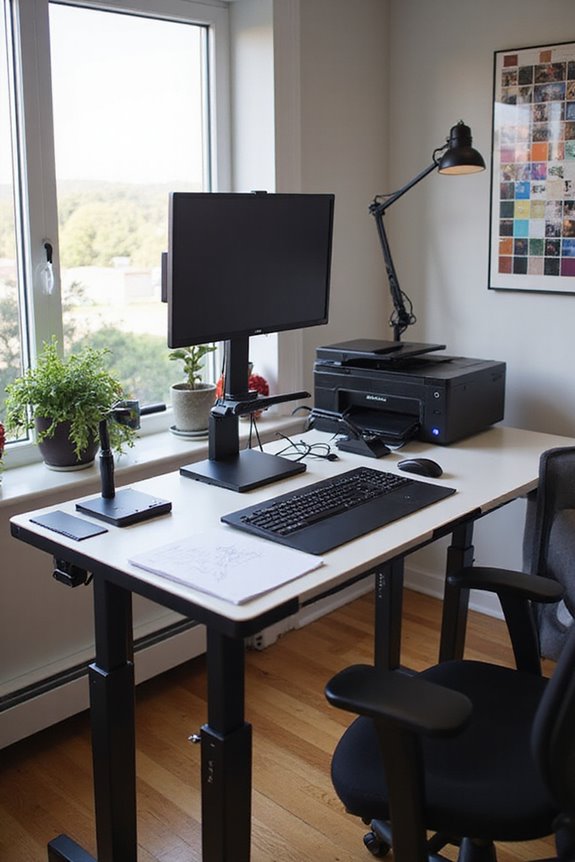The home office landscape is shifting considerably. I see remote work opportunities becoming more prevalent, with over 15% of U.S. job postings being remote. Hybrid work models are also gaining traction—employers are offering flexible schedules to boost engagement. Additionally, productivity seems to increase among remote workers, as many believe they work more efficiently at home. With 76% of job seekers prioritizing flexibility, these trends are essential in shaping future work environments. Let’s explore what these changes mean for you.
Key Takeaways
- The demand for remote and hybrid work roles will continue to grow, with over 15% of job opportunities being remote.
- Investment in collaboration technology is crucial as hybrid models become the standard for enhancing employee engagement.
- Home office setups will increasingly prioritize ergonomic furniture and technology to boost productivity and comfort.
- Flexible work arrangements will remain a top priority for job seekers, influencing hiring and retention strategies.
- Companies will adapt real estate strategies to create innovative spaces that support both remote and in-office work environments.
The Rise of Remote Work Opportunities
As remote work continues to gain traction, it’s clear that the landscape of job opportunities has shifted dramatically. Remote job growth has surged, with remote positions now accounting for over 15% of total opportunities in the U.S. In fact, there are three times more remote jobs compared to 2020. Recent remote hiring trends show that 6% of all new job postings in early 2025 are remote, a consistent figure since October 2024. Professional Services, Technology, and Manufacturing lead these sectors, reflecting a significant demand for remote talent. While 22.8% of U.S. employees work remotely at least part-time, remote roles attract 60% of job applications, highlighting the growing interest in flexible work arrangements.
Evolution of Hybrid Work Models
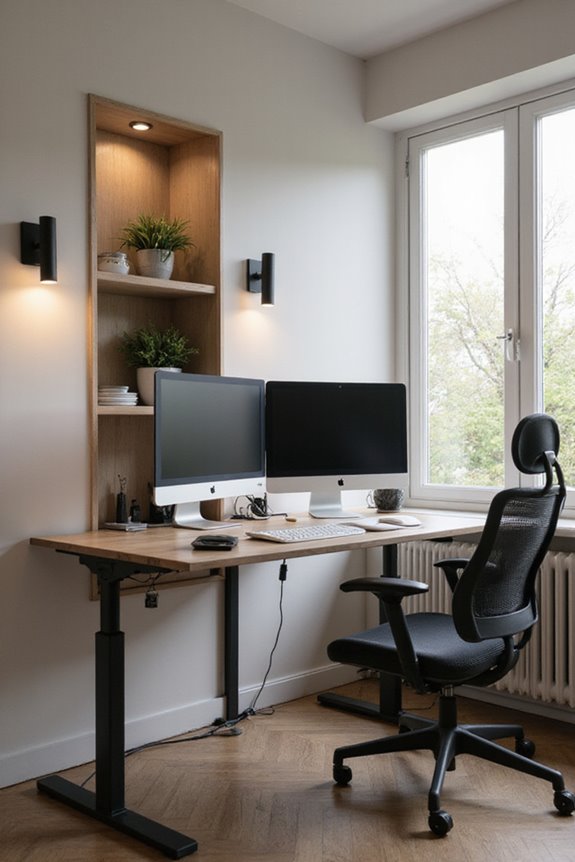
The shift towards remote work has paved the way for hybrid work models, which combine elements of both remote and in-office environments. These models offer increased flexibility, allowing employees to choose schedules that suit their needs, such as four-day workweeks. However, for hybrid work to thrive, investment in collaboration technology is vital, as only 32% of employers currently prioritize this area.
Furthermore, hybrid work norms are being developed at the business function level to enhance employee engagement. As we move towards 2025, it’s clear that hybrid models will become the standard, blending remote autonomy with essential face-to-face interactions. This evolution not only attracts a broader talent pool but also supports a healthier work-life balance, making it a pivotal trend to watch.
Impact on Employee Productivity
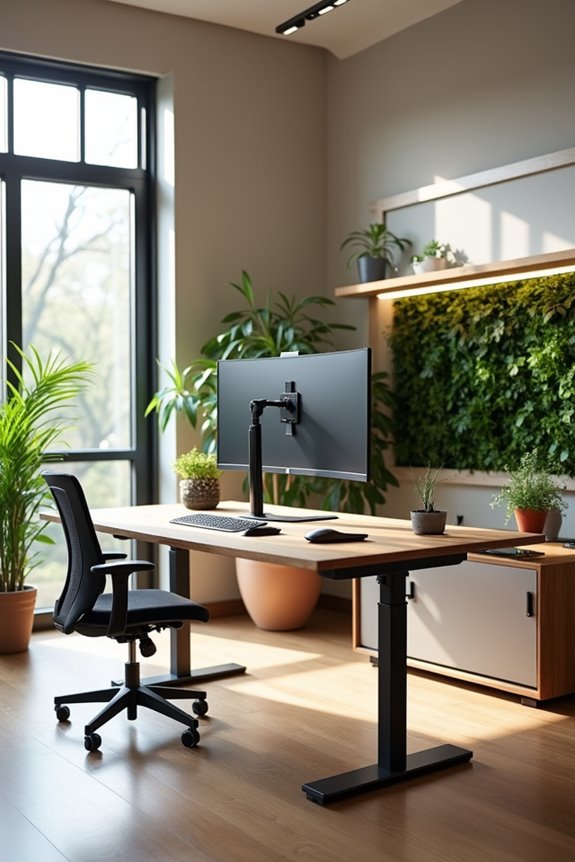
While many might assume that working from home could lead to distractions, research shows a different reality. In fact, studies indicate that remote workers are often more productive than their in-office counterparts. For instance, a Stanford study found that employees working from home increased their productivity by 13%. Additionally, 62% of workers believe they’re more productive remotely, supported by productivity metrics that reveal remote employees often put in extra hours and complete tasks more efficiently.
This boost in productivity also enhances employee engagement, as workers enjoy a better work-life balance and reduced distractions. As we look toward the future, it’s clear that remote work can greatly impact employee productivity and overall job satisfaction.
Trends in Return to Office Policies
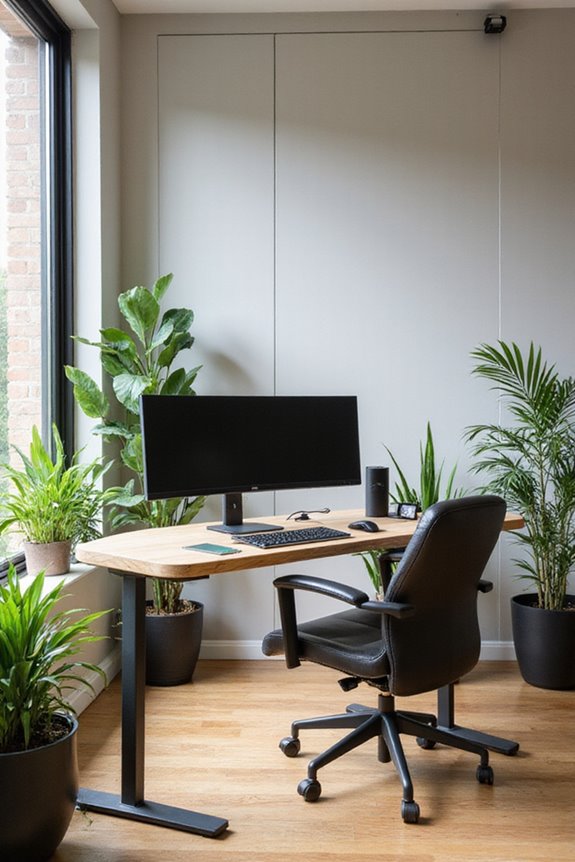
Recent shifts in workplace dynamics are prompting many companies to reassess their return-to-office strategies. As we move into 2025, stricter return-to-office mandates are emerging, particularly among Fortune 500 firms. The federal government is applying pressure to phase out remote work, leading to higher office utilization trends in regions like Washington D.C., where rates are reaching record highs.
Interestingly, while some companies enforce these mandates, many mid-to-large organizations are opting for hybrid work models with structured arrangements. This blend allows for flexibility while still encouraging in-office collaboration. As high-profile companies set the tone for attendance, real estate strategies are adapting, with more emphasis on creating spaces that foster productivity and innovation amidst changing workforce expectations.
Workforce Preferences for Flexibility
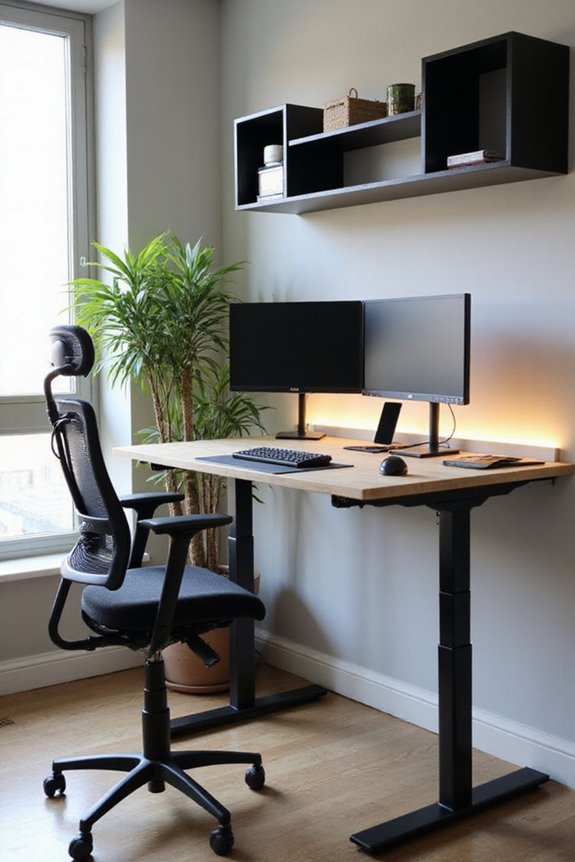
As we navigate the evolving landscape of employment, it’s clear that workforce preferences for flexibility are gaining significant traction. Today’s job seekers, especially younger generations, increasingly prioritize flexible schedules and non-monetary benefits. In fact, 76% of job seekers now expect flexibility in their roles, with 48% actively seeking hybrid positions and 26% favoring fully remote options.
This shift is largely driven by a growing emphasis on mental health and work-life balance, making flexibility a top motivator for job searches in 2025. Organizations that accommodate these employee expectations not only attract skilled talent but also enhance retention rates, as 76% of workers say flexibility strongly influences their decision to stay with an employer. Embracing flexibility is no longer optional; it’s essential.
Integration of Remote Work in Business Strategies
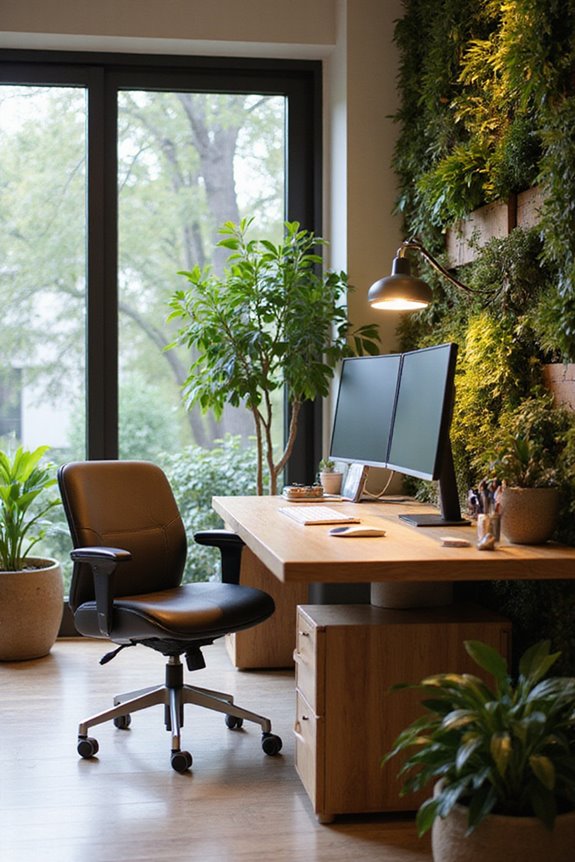
Understanding how to effectively integrate remote work into business strategies is essential for modern organizations. The combination of strategic outsourcing and technological advancements enables companies to adapt quickly. For instance, hybrid work models allow teams to enjoy the flexibility of remote work while still benefiting from in-office collaboration.
Utilizing virtual collaboration tools guarantees seamless communication, fostering teamwork even from afar. Additionally, businesses can leverage data-driven decisions to assess productivity and engagement levels among remote employees. Outsourcing specialized teams can accelerate project completion and reduce costs, while also providing access to a global talent pool. Embracing these strategies not only enhances operational efficiency but also positions organizations for sustained growth in an increasingly digital world.
The Role of Smaller Companies in Remote Work Adoption
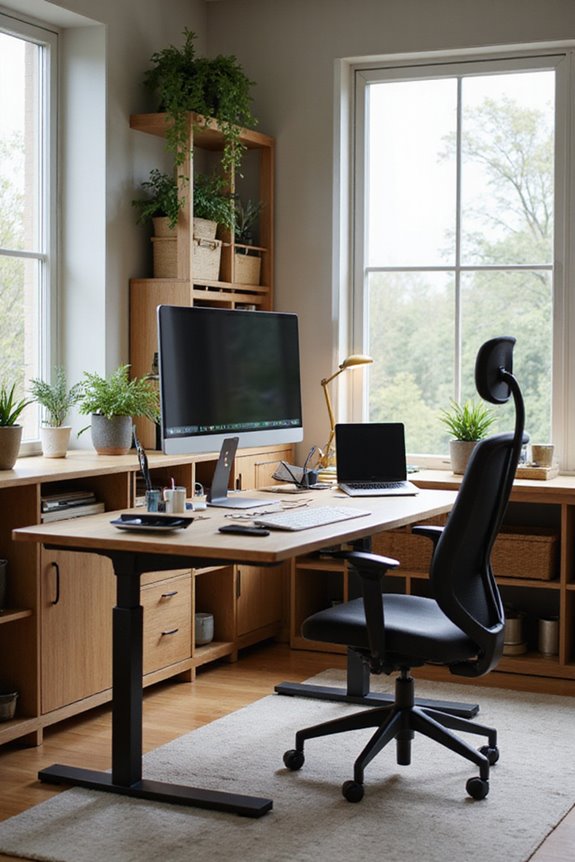
While larger organizations often dominate discussions about remote work, smaller companies play a significant role in its adoption and innovation. The small company benefits are numerous, including flexibility and cost savings. With fewer bureaucratic hurdles, small businesses can implement remote work policies faster, allowing for effective remote hiring. This opens up access to a broader talent pool, enabling them to attract skilled professionals from diverse locations.
Additionally, hybrid work models are prevalent in small firms, fostering team cohesion while offering the flexibility employees value. By embracing remote work, these companies not only enhance employee retention but also position themselves as competitive employers. The rise of remote work is not just a trend; it’s a transformative shift led by small businesses ready to innovate.
Future Projections for Home Office Environments
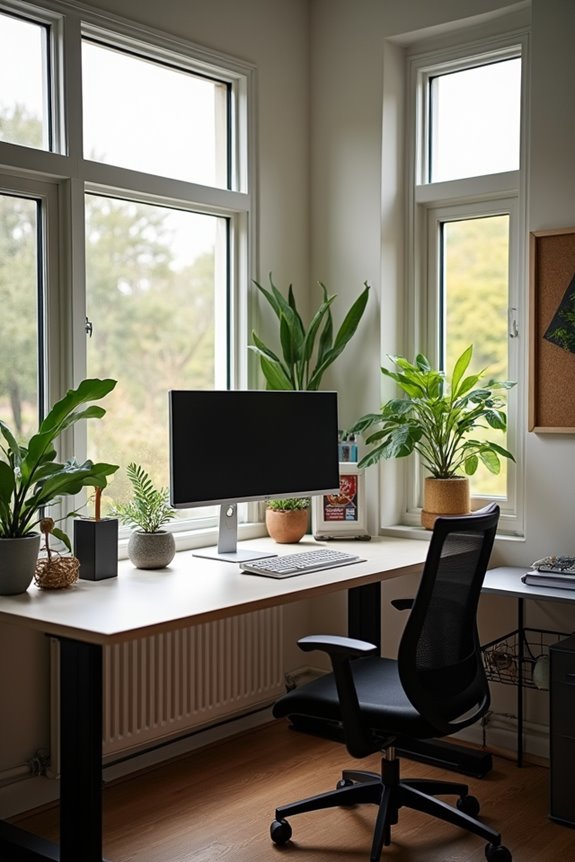
Given the rapid evolution of work dynamics, I believe that home office environments will undergo significant transformations in the coming years. With hybrid work models on the rise, employees will seek spaces that blend comfort and functionality. I anticipate a stronger emphasis on home office aesthetics, where design will prioritize both visual appeal and productivity.
Ergonomic furniture will become essential, as users increasingly focus on wellness and long-term comfort. Additionally, advancements in technology will facilitate seamless changes between home and office, enhancing collaboration. Sustainable practices will also gain traction, with eco-friendly materials becoming common in home office setups. Overall, the future will prioritize adaptable, wellness-oriented environments that support diverse work styles. Incorporating features like adjustable lumbar support will be key to ensuring comfort during long hours of work.
Frequently Asked Questions
How Can I Set up an Effective Home Office Environment?
I know setting up an effective home office can feel overwhelming, but prioritizing ergonomic furniture and maximizing natural lighting truly transforms the space. It enhances comfort and boosts productivity, creating an inspiring environment I love working in.
What Tools Enhance Remote Collaboration Among Teams?
To enhance remote collaboration, I’ve found that using virtual whiteboards and effective project management tools really bridges gaps. They help visualize ideas and keep everyone aligned, making teamwork smoother and more engaging, no matter where we are.
How Do I Manage Work-Life Boundaries While Working Remotely?
Managing work-life boundaries while working remotely’s essential for me. I prioritize my schedule, set clear limits on work hours, and embrace breaks. Achieving a healthy work-life balance keeps me focused and energized throughout the day.
What Are the Tax Implications of a Home Office?
I’ve found that understanding home office deductions is key for managing workspace expenses. By keeping accurate records and ensuring my space is used exclusively for business, I can maximize my tax benefits effectively.
How Can I Maintain Team Culture in a Remote Setting?
Imagine a team without connection—just digital ghosts! To maintain team culture in a remote setting, I prioritize team bonding through regular virtual events, fostering camaraderie and making collaboration feel as lively as a bustling office.





